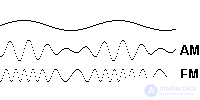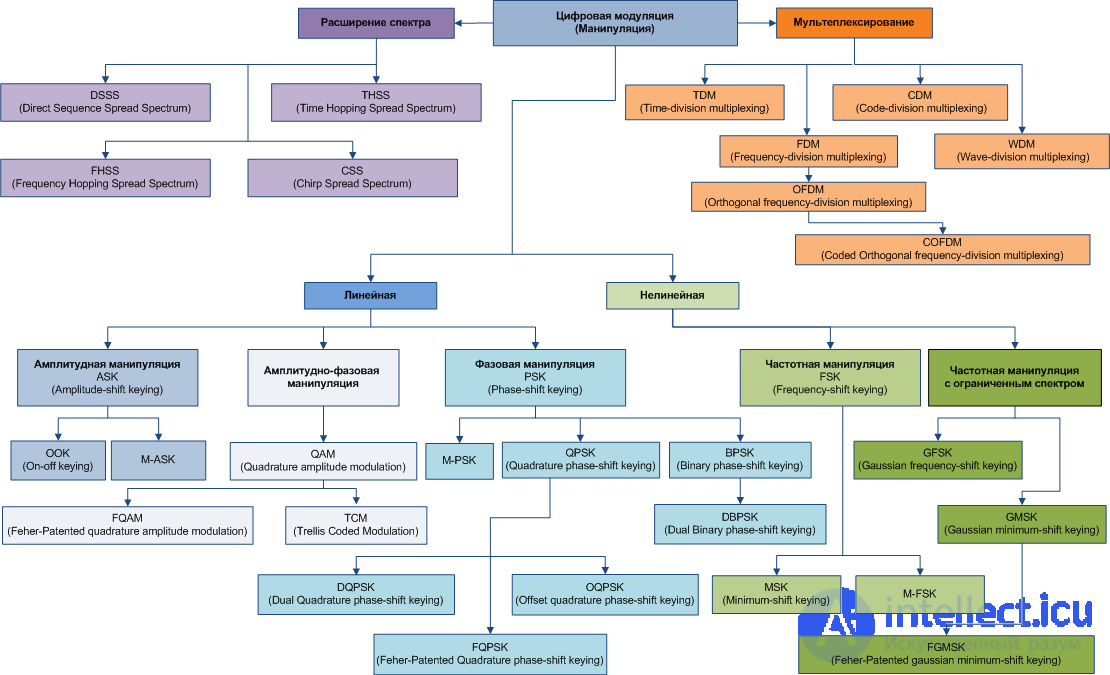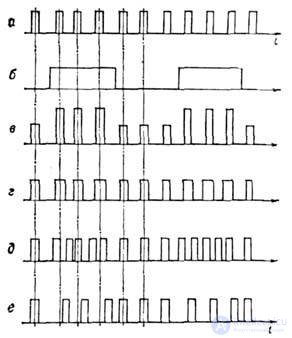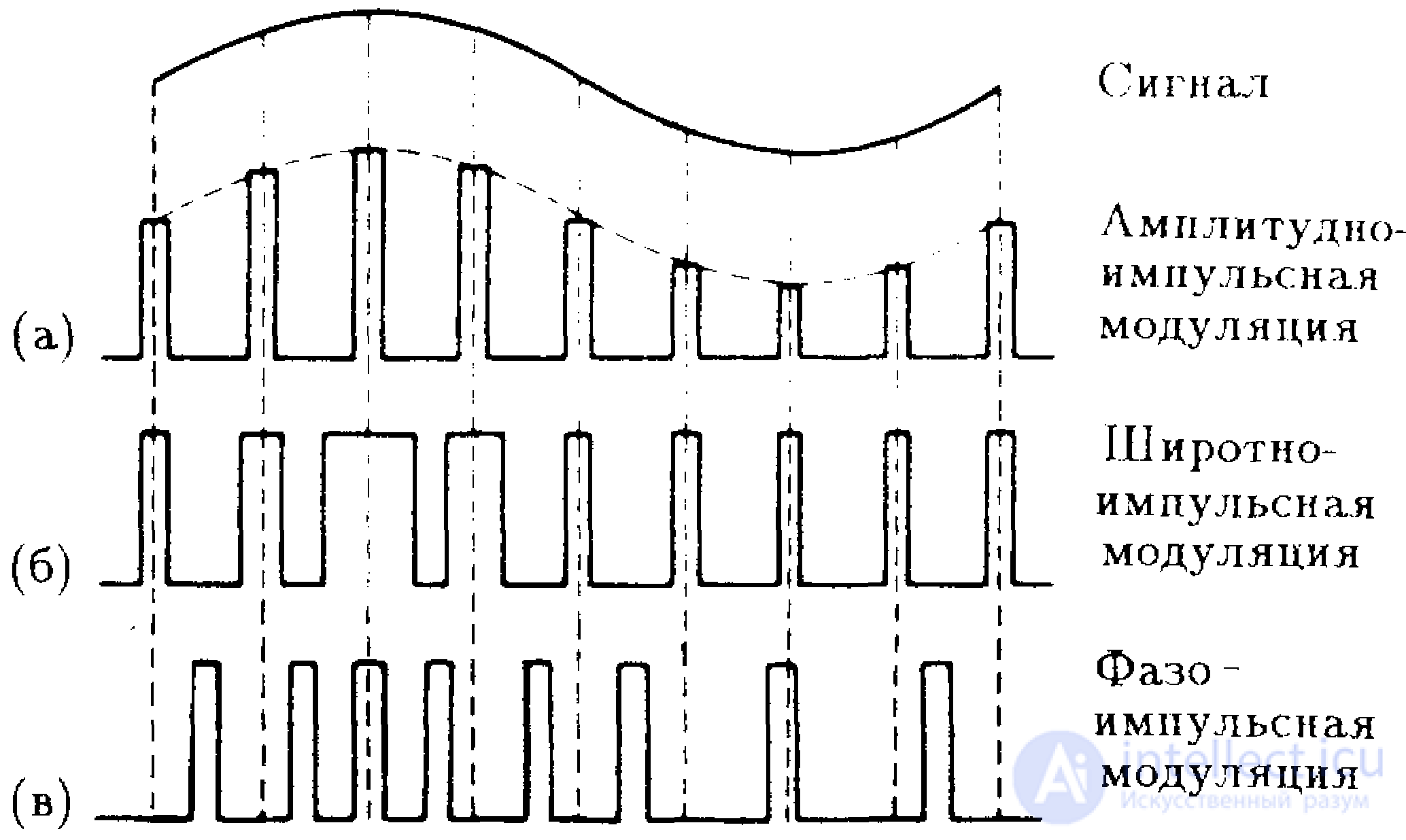Lecture
Electrical signals that carry information about human speech, a visible image (and so on) have a spectral composition that makes it difficult to use them directly in radio communications. First, for effective emission and reception of coils *** with such a spectrum, antennas of very large sizes would be needed. Secondly, since the signals from the same type of sources have approximately the same spectrum, while simultaneously emitting signals of the same spectral composition from several sources, it will be impossible to isolate the signal from the source of interest at the receiving end. The situation on the radio in this case will resemble a buzz on the market square on a market day.
The best characteristics in propagation of radio waves have colses with a higher frequency. These wheels *** are used to transfer information (they are called carrier rings ***). However, the carrier itself *** is periodic and does not deliver new information to the recipient. In order for the carrier ring to reflect the transmitted information, one or several parameters of the carrier wheel *** must be associated with the transmitted message. The process of changing any of the parameters of the carrier *** according to the law of the transmitted message is called modulation.
Harmonic collation *** is most often used as a carrying col ***. Depending on which of the parameters of the carrier range of *** of the amplitude, frequency or initial phase of the carrier range of *** of the carrier changes the law of the transmitted message, there are different types of modulation, respectively, amplitude, frequency or phase. The signal received during the modulation process is called the modulated collar *** or radio signal. If a sequence of pulses is used as the carrier col ***, then as a result of modulation, the parameters of the sequence of pulses are changed: amplitude, temporal position, pulse duration. Accordingly, the process is called pulse amplitude modulation, pulse time modulation, pulse width modulation. If, as a result of modulation, a code is formed that corresponds to any of these parameters and is represented by a set of pulses, then this type of modulation is called code-pulse.
In order to separate the signals from different sources at the receiving end, a distinctive feature of the carrying range of *** is used. Most often, as such a distinctive feature is the frequency of the carrying ring ***. In this case, talking about the frequency separation of signals. At the receiving end, a device is installed that reacts only to a signal with a predetermined distinctive feature. In the case of frequency separation of signals, frequency filters tuned to the frequency of the selected carrier range are used as the detector of the distinctive feature. The output of such a filter passes a signal only with the selected carrier frequency, despite the fact that all signals induced in the receiving antenna arrive at the filter input. In communication technology, signals with other distinctive features can also be used.
After selecting the carrier range with the selected distinguishing feature, the information contained in the modulation of any of the parameters of the selected carrier range is selected. At this stage of processing the received signal, the operations inverse to the modulation operations performed during signal transmission are performed, and this stage of signal conversion is called demodulation.
Modulation (lat. Modulatio - regularity, rhythm ) is the process of changing one or several parameters of a high-frequency carrier range *** according to the law of a low-frequency information signal (message).
The transmitted information is embedded in the control (modulating) signal, and the role of the information carrier is performed by a high-frequency oscillation called a carrier. Modulation, therefore, is a process of “landing” an information ring on a known carrier.
As a result of the modulation, the spectrum of the low-frequency control signal is transferred to the high-frequency region. This allows the organization of the broadcast to adjust the operation of all receiving-transmitting devices at different frequencies so that they "do not interfere" with each other.
Columns of various shapes (rectangular, triangular, etc.) can be used as carriers, however harmonic collations of *** are most often used. Depending on which of the parameters of the carrier range of *** changes, there is a difference in the type of modulation (amplitude, frequency, phase, etc.). Modulation by a discrete signal is called digital modulation or manipulation.
Until recently, the types of received signals were defined as amplitude modulation (AM), frequency modulation (FM), and phase modulation (FM). Let me remind you that we are engaged in receivers of mobile radio systems, and for systems of terrestrial mobile communications, frequency modulation is usually used. The most widely used systems of conventional mobile radio communications operating in the 48, 160 and 450 MHz frequency bands. The principal and block diagrams of the radio receivers of the communication systems operating with frequency modulation are significantly different from the amplitude modulation receiving circuits.
The first mobile radio systems did not include an individual call to radio subscribers. These were dispatch communication systems, where the dispatcher informed all subscribers with whom he would now carry out the radio communication by voice. Then came the individual call systems, where the choice of a specific radio subscriber was made by a tonal or digital call. At this time digital modulation types appear for the first time. These types of modulation use the already existing radio transmission and radio reception paths (the so-called tone frequency channel, the PM channel). As a similar type of modulation, special types of MSK can be called - FFSK 1200 and FFSK 2400. Conventional frequency modulation is used for voice transmission. In the same way, the first types of trunking communication are organized - SmarTrunk and MPT1327, as well as the first types of cellular radio communication systems, such as NMT-450
The development of digital mobile radio systems, both of trunking and cellular communication systems, required higher transmission rates, and consequently, the direct carrier frequency of the radio transmitter itself. This led to the development of special types of modulation, such as GMSK, and a change in the structural and conceptual scheme of both the transmission path and the reception path of digital radio communications transceivers. The development of even more efficient digital modulation types in speed led to the creation of signals containing an amplitude component, which in turn led to another change in the structural and schematic diagrams of transceivers operating with these modulation types. The classification of the main types of digital modulation is shown in Figure 1.

Figure 1. Classification of digital modulation types
In this picture, a class of digital modulation types with a constant envelope (amplitude) of the signal is clearly visible. These types of digital modulation allow you to work with receiver circuits, built like frequency modulation (FM) receivers. The types of permanent carrier digital modulation include FFSK, MSK, GMSK, GFSK.
With a further decrease in the width of the spectrum of the radio signal, implemented using the Nyquist filter, the digital modulation signals acquire an amplitude component. The depth of spurious amplitude modulation in a number of types of digital modulation, such as BPSK, QPSK, 8-PSK, is 100%. As a result, the reception path of such types of digital modulation is built similarly to the reception path of analog amplitude modulation, and the fact that the depth of amplitude modulation exceeds the depth of modulation of analog signals leads to more stringent requirements for receiver nodes of digital modulation.



Manipulation (modulation)




 - the ratio of the data transfer rate to the used bandwidth of the radio channel.
- the ratio of the data transfer rate to the used bandwidth of the radio channel.
Comments
To leave a comment
Devices for the reception and processing of radio signals, Transmission, reception and processing of signals
Terms: Devices for the reception and processing of radio signals, Transmission, reception and processing of signals